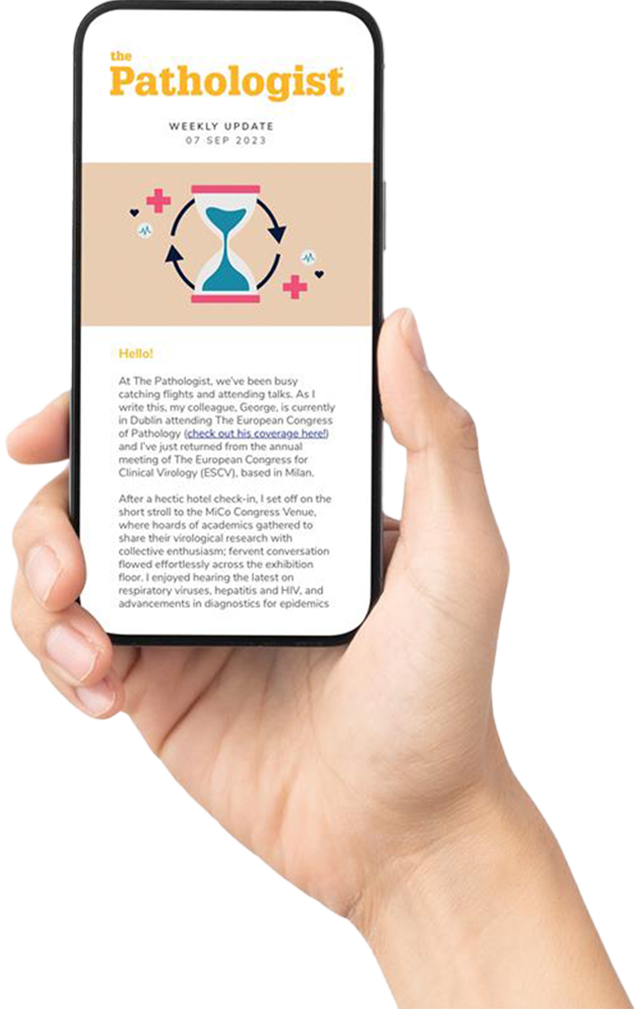
According to the American Cancer Society, 2024 will be the first year of its kind – hitting an estimated 2 million new cancer diagnoses in the US (1). However, labs are not sufficiently prepared to meet this demand head on. Pathology departments worldwide face various challenges with a decreasing workforce, while the increasing complexity of cancer demands a more nuanced approach to diagnosis.
In response, pathologists are becoming more receptive to using automated diagnostic tools developed with machine learning – serving as digital assistants to support quality diagnosis. These innovations mark a quantum leap in cancer diagnosis and bring remarkable advancements across the entire pathology workflow.
Case prioritization
When diagnosing biopsies, pathologists are tasked with systematically evaluating all possibilities and medical conditions. In addition to detecting cancer, they also need to consider if the patient has any premalignant conditions, malignancy simulators, or inflammatory conditions before reaching a final diagnostic decision. However, manual case review is a laborious and inefficient process, usually performed on a first come, first served basis.
However, AI-powered solutions are set to effectively streamline the diagnostic workflow. Operating much like a traffic light system, these solutions prioritize and triage cases with a higher likelihood of containing disease cells before passing it to a pathologist. This can help balance work more efficiently within the team according to sub-specialty and experience – alleviating the workload for pathologists while translating to faster turnaround times in the diagnostic process.
Enhancing diagnosis
Certain tasks, such as biomarker quantification and Gleason scoring, are subjective and can lead to varied interpretations based on individual experience and perspective. Automated decision-support tools now go beyond the already demonstrated accuracy and efficiency gains – reducing variability and improving consistency. AI can also enhance the skills of less experienced pathologists by allowing clinicians worldwide to tap into the expertise of specialists who help train the algorithms. This results in more informed and detailed cancer diagnosis. By incorporating expert insights, AI democratizes care – bridging gaps between high and low equality areas and ensuring all patients receive accurate and comprehensive diagnosis.
Optimizing lab workflows
The daily diagnostic routine provides critical components that influence treatment decisions. However, tasks such as mitotic counting, detecting lymph node metastases, biomarker quantification, and tumor sizing are traditionally time-consuming when performed manually. Deep learning automated systems can help expedite these tasks while improving accuracy, streamlining review, and assisting reporting.
Similarly, there's a possibility of improving efficiency in the immunohistochemistry workflow. Traditionally, ordering ancillary tests following an initial slide review introduces delays that impact turnaround time and increase review cycles for pathologists. Leveraging the 24/7 availability and speed of automated solutions, we can program algorithms that analyze cases prior to pathologist review and proactively trigger pre-ordering of additional stains.
The high accuracy of AI systems is also supportive in reporting clear benign cases, which may have otherwise required additional tests. Optimizing and streamlining the overall diagnostic process is also crucial to saving costs and reducing disruptions to the pathologists workflow – ultimately expediting patient diagnosis.
In an age of precision medicine and targeted treatment, accurate and early diagnosis has never been more crucial. If we want to overcome the headwinds of rising pathology caseloads and personnel shortages, we need to double down on the adoption of digital pathology and AI. Thankfully, the pathology community is responding positively to this call to action, with labs across the world changing century-old practices to improve diagnosis and transform cancer care forever.
References
- American Cancer Society (2024). Available at: https://www.cancer.org/research/acs-research-news/facts-and-figures-2024.html




